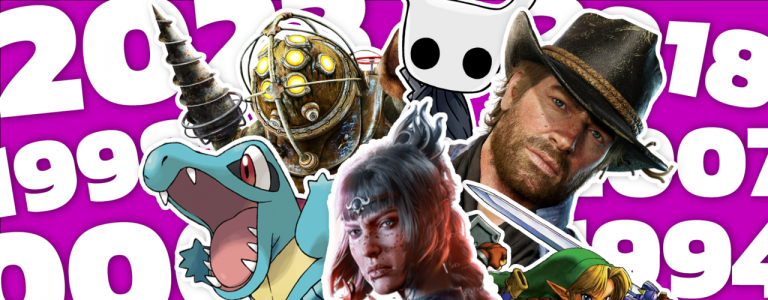On September 28, the Van Gogh Museum in Amsterdam opened its doors with an exciting new display inside. That day, visitors would delight in new, featured artwork based on Vincent Van Gogh’s iconic paintings, but with a Pokémon twist. Or at least, that was the idea. However, rather than fans happily enjoying the collaboration, footage from the museum that day shows stampeding crowds flooding the gift shop. These people weren’t there to see Pikachu painted like Van Gogh’s prolific self-portrait; they just wanted to vacuum up all the merchandise, including a limited-edition Pikachu card.
The video of dozens of adults pushing and shoving in an art museum is embarrassing, but this was only the beginning of scalpers looking to buy limited-edition merchandise from the Van Gogh collaboration to resell it online. When the Pokémon Center online store started selling some of these items—packaged with the limited-edition card—to people who couldn’t make it to Amsterdam, most of the merchandise immediately sold out and showed up on auction sites like eBay, with prices jacked up into the triple digits. Within minutes, a cross-promotional event meant to last until January had run out of supply in the face of incredible demand.
Shortly after, The Pokémon Company released a statement apologizing to fans who wanted to buy these pieces and claimed it would find more ways to distribute the Pikachu card, specifically. There was nothing said about whether or not it would put items like the Pikachu Van Gogh plush or any of the prints up for sale again, however. Later, on October 12, the company announced it would be bundling the Pikachu with Grey Felt Hat card in Pokémon Center orders containing TCG products while supplies last, and as long as the purchase exceeded $30. Still, the entire fiasco was deflating for Pokémon fans and will no doubt be profitable for those who scooped up the limited stock just to throw it on reselling sites.
The fervor reached such a boiling point the Van Gogh Museum is no longer giving the promo card out on-site, citing “safety and security” as a concern on its website.

Unfortunately, this isn’t an anomaly in the Pokémon community. Issues like this arise from time to time with limited-edition merchandise in any franchise that draws in collectors, and they’ve become increasingly common in Pokémon in recent years. But it doesn’t have to be this way.
The Van Gogh Museum situation was a microcosm of what Pokémon fans are dealing with
Pokémon resellers have become an epidemic for the series in the past few years, especially in the Trading Card Game realm. Why? It depends who you ask. Some folks point to the renewed interest the franchise saw after Pokémon Go launched in 2016, but others say things really started getting bad when interest spiked again in 2020 at the beginning of the covid-19 pandemic. There’s also been an uptick in popular influencers like Logan Paul bringing a lot of modern visibility to Pokémon cards, and inflating their perceived value with over-the-top spending. PJ, the sitemaster for fan site PokéJungle, has been covering the franchise since 2003, and says times are tougher now for Pokémaniacs than they’ve probably ever been. The Van Gogh Museum incident, he says, is one of the most dire examples he’s experienced in the past two decades.
“I think the popularity of Pokémon in recent years has made reselling cards and merchandise a lucrative business opportunity for people who don’t have moral qualms about fleecing fans,” he said. “I also think that fellow millennials may be getting nostalgic for their childhood and revisiting the series, driving up prices for not only new releases, but older collectibles as well.”

Grace Klich, a retro collector and owner of one of the Pikachu Volkswagen Beetles, described the museum stampede as something you’d see out of a Black Friday video, with shoppers losing all sense of decorum just for the chance to get a coveted item. While the spectacle may catch the average person’s eye, it wasn’t surprising for Pokémon fans.
“This is not a new problem,” Klich told Kotaku. “The Van Gogh thing was a perfect example of what has been happening for the past few years, probably since 2020, really. But that was definitely more of a physical thing that we could see [as opposed to] just like website launches.”
Evelyne Adriana de Groot, a TCG judge in the Netherlands, was present for the event’s first day. She told Kotaku she saw people with as many as 10 of the Pikachu cards all to themselves, and when she asked how they got so many, they said they just waited until new employees were staffing the desk and lined up again.
“It’s horrible,” she said. “I even saw people waiting there to have their cards sold on eBay. Disgusting if you ask me.”
The increase in the perceived value of Pokémon merchandise has had wider ramifications not just for fans who want to buy them, but also for retailers who sell them. In recent years, some stores like Walmart and Target have had to remove Pokémon cards from store shelves due to “inappropriate customer behavior,” including opening packs before purchase to see if a rare card is inside, and on rare occasions even escalating to the point of violence. This hasn’t gone away either, as there have been reports of suppliers being jumped by scalpers looking for rare cards.
Some of these acts are small, petty crimes, but the grift runs so deep that there was even an instance of cards allegedly being stolen directly from The Pokémon Company, though the corporation disputed this in a statement issued to Kotaku at the time. Wherever the reselling schemes start, it has bled into how people engage with Pokémon cards and merchandise at the most basic level. Fans like Gwen Gruber have seen firsthand how resellers have taken the magic out of the hobby, both for longtime Pokémaniacs and for children who are in the early stages of trying to get involved.
“I would see people at our card shop, oftentimes kids, being bought out,” they said. “Like, people hunting for rare cards would loom over them as they open packs, then, like vultures, try to lowball the rare cards from the people just having fun opening packs or getting into the game. Same sorts of people that bought out retail supply of packs and sets.”
The Van Gogh Museum mess was certainly exasperated by the inclusion of rare cards, but this isn’t exclusively tied to the Trading Card Game. Plushies of Pikachu, Cubone, and other Pokémon sleeping recently went up on the Pokémon Center website. The Cubone sold out before the others, and is already showing up on eBay for more than twice the original asking price. Meanwhile, Santa Cruz skateboards bearing Pikachu and friends’ likenesses were being listed for up to $20,000 because only a small handful of them were made, and they were sold in blind boxes. People are willing to spend ludicrous amounts to circumvent the randomness inherent in opening card packs and skateboard blind boxes.
How did Pokémon collecting get here?
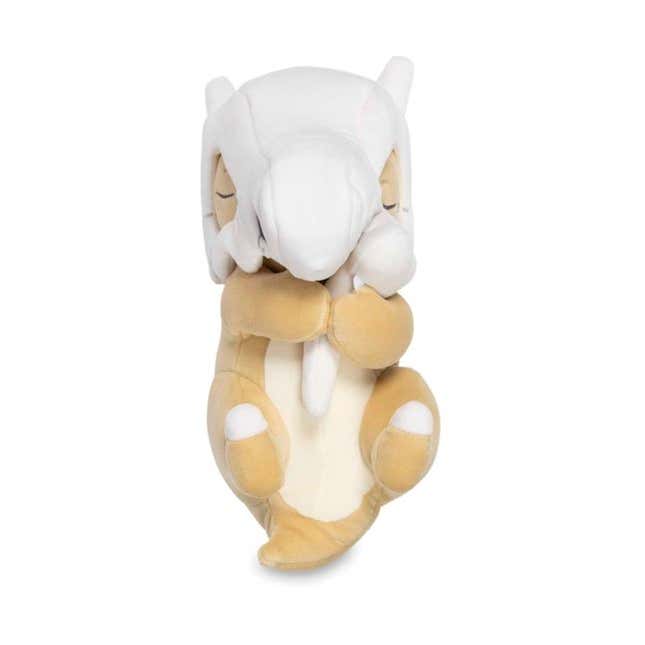
In some ways, this feels like the inevitable endgame of what we’ve always been told about Pokémon cards and collector merchandise. I have distinct childhood memories of my parents, who knew nothing about Pokémon beyond what my brother and I told them through excited squeals, telling us to hold onto holographic cards because they’d be worth a lot of money one day. Their frame of reference was baseball cards, and while I was too young to understand what they meant, I don’t think they could have fathomed how the rot of that sentiment would infect the brand. Jon Sahagian, the site runner at PokéBeach, a TCG-focused site that was nearly destroyed by hackers trying to coerce him out of rare cards, has been around the series since the late ‘90s and has seen firsthand how cards have skyrocketed in perceived value in recent years.
“I remember buying first edition boxes of Jungle, Fossil, Team Rocket, Gym Heroes, Aquapolis, and other sets for $90 in 2003. Those same boxes are easily worth over $15,000 now on eBay,” he told Kotaku. “I think people feel that if they wait another 20 years, they’ll see the same increases in value for modern PTCG products. They think Pokémon is going to be a worthy investment.”
If reselling is such a morally bankrupt practice, why aren’t there better systems in place to prevent it? While it naturally starts with those who take time out of their day to find, buy, and flip a rare collector’s item, those methods are only possible because of The Pokémon Company’s handling of manufacturing and distribution.
In fairness, the Pokémon Center website has a few fail-safes in place, but their implementation is so poor they often hurt regular fans more than they do the average scalper. The store attempts to block perceived bots from using the site, but whatever system The Pokémon Company is using often prevents regular users from accessing it. I personally have tried to open up the Pokémon Center on any given Tuesday when no big promotions are happening and have been met with a screen informing me that “You have been blocked.” Klich said this also happens during promotions like the Van Gogh collaboration, which only added to the frustration regular fans experienced when they finally got access to the website and saw that everything was sold out.
While the average fan will likely just try to access the website by typing the address into their browser, PJ points out fans who have been around long enough have found workarounds to access listings early or at least more quickly than any Youngster Joey would know how. People have become so good at exploiting the Pokémon Center website that there are ways to cheese the system before listings are put in an easily visible place on the store.
“What happens in actuality is that fans will see items go up on the United Kingdom PC site and be able to access those same items for other regions by simply changing the URLs, even though those items won’t appear in the ‘New Releases’ or elsewhere on the site,” he said.
“Sometimes listings will also go up as ‘out of stock’ for items before they’re actually available and be removed, but not before people have bookmarked the URLs. It seems like the Pokémon Center team may think that these items are invisible because they’re not searchable or added to categories publicly, but fans and bots are clever, and many times end up finding URLs to purchasable items.”
But even accounting for these issues, a sentiment shared by everyone Kotaku spoke to is that when it comes to special events and promotions like the Van Gogh Museum collaboration, The Pokémon Company doesn’t seem to produce enough product to circumvent what has become a known hurdle for the community. Steve Sarumi, host of the Pokémon podcast It’s Super Effective, acknowledges that some of these issues are unavoidable, but says The Pokemon Company’s continued lack of action on other hurdles has become a pattern.
“You know the iPhone 15 just launched, and like every iPhone launch, Apple’s website and mobile app had problems with the demand,” Sarumi said. “One side of me is not surprised that one of the most profitable companies in the world still has issues to this day with new launches, so Pokémon Center breaking was also not a surprise. I am surprised that TPC isn’t turning out more product to meet demand. Sure, the website might crash and be broken, but they can also go to manufacturers and make more plushes and cards, so why do they struggle to understand the demand of their collaborations?”
In the case of the Van Gogh Museum, stock wasn’t the only issue, as poor distribution made reseller’s jobs even easier.
“It’s shocking that the Van Gogh Museum did not initially limit the Pikachu promos or merchandise to one per ticket,” Sahagian said. “That seems like an egregious oversight. If there’s a promotion, TPCi should be manufacturing enough product to be enjoyed by fans. Not so little that it sells out within an hour. They could take preorders to assess how much they should manufacture, or do some items as ‘made to order,’ as they sometimes do in Japan.”

Welcome to Exp. Share, Kotaku’s Pokémon column in which we dive deep to explore notable characters, urban legends, communities, and just plain weird quirks from throughout the Pokémon franchise.
There are a lot of hypothetical solutions, but given The Pokémon Company’s supposed surprise, some fear the company is either out of touch with its own community or is, perhaps, feigning ignorance.
“They put out like an apology and, ‘Surprised Pikachu meme, we didn’t think this collab was going to be so anticipated.’” Klich said. “And it’s just like, ‘are you serious? Have you not seen [that] this is not a new problem?’ I don’t understand why they’re shocked by this.”
Sahagian theorizes that the company’s rapid growth in recent years may be a factor.
“I know that the number of TPCi’s employees has been growing exponentially lately, even in just the past year. Perhaps they’re growing so large, so fast, it’s difficult to keep on top of their own product. Perhaps some of their newer hires don’t know the franchise’s history, and the older ones are disconnected from its current reality. I think it would benefit TPCi to consult with experts in our community to get objective feedback. There are a few of us who have been here since day one and can offer our insight.”
But even as outside companies fall victim to the force of nature that is resellers, the practice has become so embedded in Pokémon as a brand that you can’t go to a dedicated event without seeing it infect what should be a celebration of the community.
“Oh, scalping has been bad at any in-person Pokémon tournament selling merch related to the event, like Nationals or Worlds,” Sarumi said. “Pokémon backpacks at these events are one of the highly sought after items. Just recently at the Ohio National tournament, one of the first people walking out of the Pokémon Center had at least 8 backpacks in their hands to resell. Again, shocking that Pokémon drops the ball on item limits and making enough for demand at these events. This was the same at the World Tournament in Yokohama, the backpacks sold out instantly each day.”
The Pokémon Company’s reaction has been insufficient
With issues of safety, supply, and demand being such known quantities within the Pokémon collector community, it paints the failings demonstrated by the Van Gogh Museum situation in a far more insidious light. If The Pokémon Company is at least cognizant of these issues, the fact that it was so ill-prepared to deal with them feels neglectful toward the people working the event and the fans who want to take part.
“I feel so bad for the museum workers that day,” Klich said. “I couldn’t even imagine working there. They probably had no idea it was gonna be like this. [It] was surprising that [they were] being blindsided because this was announced only like a week before it came out. I don’t know how people managed.”
Klich wonders if announcing the collaboration only a couple of weeks before it opened might have been an attempt to dissuade resellers from making an expensive trip. The event was announced on September 12, and opened just over two weeks later, on September 28. Still, she says, if the idea behind these last-minute announcements is to assuage these issues, “clearly that’s not working.”
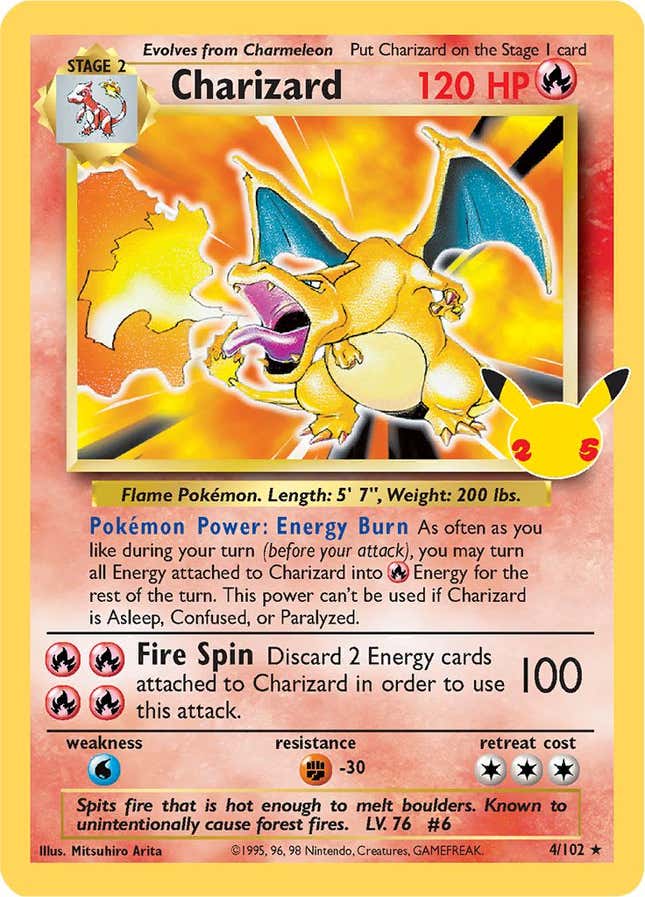
That being said, according to Adriana de Groot, the scalper market is alive and well in the Netherlands, even when it’s not for a huge collab.
“When [the Celebrations 25th anniversary cards] came out I saw all the stock of a local store being sold to this person right in front of my eyes,” she said. “It broke my heart and I even said to my local store that I really wanted to buy this ETB box. The guy who bought all the stock up said I could buy it from him for double the price. Yeah, that felt sour.”
The brands Pokemon has worked with have spanned multiple industries, but given how each has run into the same issues, Sarumi feels there is one common denominator.
“I’m curious if The Pokémon Company, when they collaborate, puts more responsibility on the brand they are working with? Recently they’ve worked with Santa Cruz, The Hundreds, Levi’s, to name a few, and they all have had the same problem, which is not enough inventory to meet demand. In my eyes, the blame still goes back to The Pokémon Company regardless for not setting correct expectations with these brand collaborations.” Again and again, he says, these events leave fans feeling burnt, and the collaborations almost never goes smoothly enough to just be enjoyable. “Maybe the Oreo collaboration?”
Kilch also wonders, with the exhibit’s opening being such a public stumble, if sooner or later, all the frustration around all these collaborations will start to dissuade companies from wanting to partner with Pokémon at all.
“I think other museums or companies are gonna look at this and just be like, ‘wow, I do not want to be looked at in a negative light, and if I work with Pokémon, that happens,’” she said.
It’s a fair question. Though some folks like Gruber understandably call Pokémon “too big to fail,” if the franchise develops a reputation for potentially drawing destructive crowds rather than youthful smiles, does that cast a shadow over the fact that you sold a three-month supply in a matter of minutes, no matter how profitable that may have been? Whatever internal conversations might be, The Pokémon Company put out an apology and said it would be looking for new ways to distribute the limited-edition Pikachu card, but stopped short of saying that it would be looking into countermeasures to help avoid issues like this in the future. Klich wonders if there’s any incentive for the company to actually address them.
“At the end of the day, I don’t think it’s really their problem,” Klich said. “They just care that they sold everything. Cool, they’re happy with that. They sold a three-month supply of this collab in a day—I’m sorry, under three minutes. They’re happy. Their fan base isn’t happy but their fan base hasn’t been happy with Pokémon in a long time in terms of their games and stuff. When is Pokémon gonna start listening to their fan base? Because I feel like there’s been issues besides scalpers with The Pokémon Company for the past little bit.”
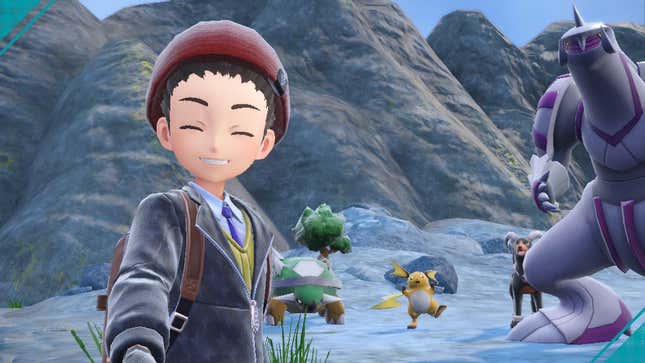
Indeed, frustration and dissatisfaction within the Pokémon community have been growing with regard to much more than just merchandise sales. Pokémon Scarlet and Violet launched on Switch in a near-broken state last year, and even after some updates and a DLC, the game is still largely busted from a technical standpoint. In August, COO Takato Utsunomiya discussed the unsustainable yearly release cadence of the franchise, and said that conversations are happening about how to improve the series’ quality while keeping up with the Pokémon machine. Pokémon Go has also been under fire recently after changes to Remote Raids put a “tax” on players who live in rural areas or are disabled. But developer Niantic and The Pokémon Company haven’t budged on reverting the changes to make the game more accessible. And if Scarlet and Violet still sold like hotcakes in spite of everything and Pokémon Go is still bringing in money, does it really matter if fans aren’t happy?
As the dust settles, all that’s left are sad Pokémon fans and fat wallets
In the wake of the museum incident, fans have been dissatisfied by how The Pokémon Company has attempted to make good, as innocent fans fall victim to what feel like automated solutions. Several people who managed to grab a piece of the Van Gogh collaboration merch online have since been met with cancelation emails as the Company attempts to allocate stock to people who don’t know The Pokémon Center’s exploits, but some of those orders were placed by ordinary fans and collectors. PJ suffered a canceled order himself, but only found out through checking the Pokémon Center website, rather than receiving an email notifying him.
Clarity and communication around these events has also been cited as a major weakness in these rollouts. Those deeply tuned into the Pokémon community were well aware that the Van Gogh collaboration sale was taking place, but if you weren’t checking third-party accounts, it was easy to miss that the plushies, prints, and cards had gone on sale.
“From a technical perspective, I feel like the team behind the Pokémon Center is not updating the site in the best way,” PJ said. “I would think that they’d want to have a staging server that they make changes to and, when finally ready to launch something, push all those products live at the same time and notify fans.”
Even if The Pokémon Company were to find more drastic ways to intervene, this is an example of how late-stage capitalism cultivates an environment that encourages people to turn to any means of making a quick buck, even with methods as precarious and risky as reselling merchandise.
“When you combine this with the economic instability of our world today, I think people are just trying to find ways to invest and make money,” Sahagian said. “Though you have to be careful. Some of these people are here to rip you off or sell you an illusion, like scalpers, some YouTubers, some pack opening services, and these new ‘investment’ companies who have recently entered our hobby. That’s why I think it’s best that fans stick to sources who have a long and proven history with this hobby, who were here even when Pokémon wasn’t in the popular consciousness.”

Still, some creators hesitate to outright condemn anyone who takes part in reselling, because as easy as it is to chalk this issue up to greed, there are systemic issues that have driven people to these practices that go far beyond anything The Pokémon Company has done, but it has had a lasting effect on those who are just trying to buy a limited edition item.
“It is easy money, man,” Klich said. “It’s dollar signs, people want it, people buy it. I totally get [that] in a time where people are struggling financially and when wages are stagnant, people see it as an easy way to make a quick buck. But man, it is hurting the community so bad,” she said, lamenting that those who see this merch as nothing but a moneymaking opportunity are making things miserable for genuine fans.
While scalpers are at the heart of this cycle, ultimately, some of the blame does fall on those who, despite their dissatisfaction, still buy from these resellers. People try to flip Pokémon merchandise because they know that a fan who missed out on the initial sell will begrudgingly pay twice as much for a piece of merchandise they really want. Even long-time fans who have seen this play out many times before aren’t immune to the weaponized nostalgia scalpers rely on.
“I don’t like to encourage price gouging, so I don’t generally pursue items that sell out at retailers if they’re being sold for double or triple the price,” PJ said. “I did make one exception (sorry!) for the Shiny Crobat Shining Fates Premium Collection because my very first shiny Pokémon, way back in Pokémon Crystal, was a shiny Golbat that I evolved into a Crobat and I wanted the oversized card as a memento of that.”
Reselling has become a self-fulfilling prophecy, but it doesn’t have to be this way. Klich says that while the kneejerk reaction might be to drop twice as much money on an item once it’s listed on eBay, one way fans can combat this entire problem is to take their finger off the buy button until things calm down.
“[There are] a lot of people that have kind of given up, but I think as long as you’re patient, you will be able to get it once the hype goes down,” she said. “You can find it for [closer] to a normal price. That’s what happened with the Delivery Pikachu card that came out. I think at the end of 2021 that card was worth a ton of money and it is not very valuable now. I feel like [the limited-edition Van Gogh Pikachu] card is gonna be the exact same way. It [will] sell out for a decent amount of money now, but once the hype is over, it’s done. Cards are not a stable market.”
That’s been a learning process for a lot of Pokémon fans. PJ has even come to regret jumping on the Shiny Crobat card early on, despite its sentimental value.
“I did have to go to eBay for that purchase and paid far more than the MSRP,” he said. “Ultimately, the card prices died down a bit after that and it was in stock at some retailers on sale for quite a while, so I would have been fine anyway. Hindsight is 20/20.”
Buying Pokémon merch is an international struggle
But what about people who often can only get Pokémon merch through resellers? Despite the worldwide love for Pokémon, the Pokémon Center website is only supported in a few territories. Sure, a lot of mass-market merchandise will make its way to local markets eventually, but the official Pokémon Center items can be harder to come by, depending on where you live.
“I really believe that Pokémon fans outside the U.S., Canada and UK should have a way to buy official Pokémon Center merchandise as well, whether that’s local PC sites or the company working with retailers in different regions to distribute their merchandise,” PJ said.
Locals in the Netherlands who missed out on the Van Gogh collaboration because it was overrun by resellers still missed out on that merch when they tried to buy it online because the Pokémon Center only operates out of specific regions and can’t account for worldwide demand.
“I was there waiting for the Van Gogh Museum collaboration to go online on the website,” Adriana de Groot said. “I have a friend in the UK who I could have shipped the items I wanted to buy to. However, [the listings never went up]. [Thanks] to friends who are judges, I figured out there is a Discord which consists of 8000+ members who had links early to the items.”
Fans are trying to make their voices heard
With brand resentment at an all-time high, fans are doing the best they can to make their voices heard. In the wake of the Van Gogh Museum debacle, PJ launched a fan campaign called #FixThePokémonCenter. While he acknowledges that speaking out about this issue so publicly may hurt his relationship with The Pokémon Company, the idea is for fans to share bad experiences they’ve had with the store over the years with the hashtag in hopes that it will push the store to implement changes. These could be backend technical improvements to better recognize people over bots, or things like making TCG sets print-to-order so scalpers aren’t able to lap up all the stock before fans have a chance to buy their own. The Japanese Pokémon Center website has taken these measures in the past, and PJ would like to see similar action in other territories.
“I do hope that it can be a learning experience for the company and that they can hear the desire from fans for a better shopping experience,” PJ said. “We just want to buy things and support the franchise; it really could be a win-win.”
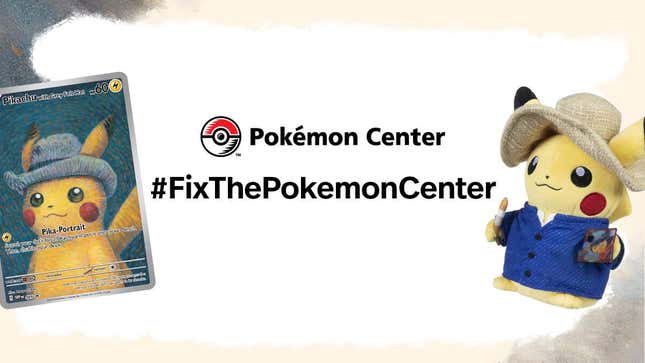
As these issues leave fans soured on the franchise, one potential long-term ramification is that Pokémon might mean something different to younger generations than it meant to millennials growing up with it in the ‘90s. Sure, we dealt with the disappointment of not getting our favorite in a booster pack, but being a Pokémon fan in search of exciting merchandise has become a full-time job in the face of these challenges.
“It’s going to hurt Pokémon’s ‘brand integrity’ in the long-run,” Sahagian said. “Kids aren’t able to buy that merchandise and form those nostalgic connections. If you try to tell a kid today that the newest set is out, they won’t find it at Target because the scalpers already cleared it out at 8 a.m. before it touched the shelf. They might find it on the Pokémon Center website if their parents are following unofficial drop accounts, but it’s a time investment. That’s not to say it’s impossible to find Pokémon merchandise, but it is often a stressful and inconvenient experience. Personally, I’m finding myself less interested in Pokémon products as time goes on, as I just don’t want to deal with the ‘hunt.’”
Even long-time collectors like Klich have tapped out of certain sides of the fandom because it’s become too exhausting to keep up.
“I stopped collecting TCG even before the hype and I just don’t get how it’s even fun for anyone at this point,” she said. “It just seems to be such a pissing contest. I don’t like that culture whatsoever. It’s just too much competition and it’s not fun.”
Can things get better for Pokémon fans?
But is this all Pokémon fans have to hope for anymore? This trend has been going on for years, and shows no signs of slowing down. And while it may not be a Pokémon-specific issue, Klich theorizes that The Pokémon Company’s insistence on in-house distribution is part of why the community feels it more than other fandoms might.
“I think of something like a Funko Pop,” Klich said. “[With] Pokémon-exclusive items, you can buy it on Pokémon Center and that’s it. That’s the only place you can get it. But I know certain Pops you might be able to get it at like Target or Walmart. But there are some that are only available at GameStop, but there’s 20 GameStops within a 20-mile radius of me. So it gives people a little bit more opportunity to get it.”
Sarumi echoed Klich’s sentiment, saying the “lower barrier to entry and with the Pokémon brand” makes it an easier hobby to infiltrate. Still, even when big Pokémon merchandise does drop in general stores like Walmart, scalpers know that it’s worth grabbing them all and reselling them because they’re part of an extended collection.
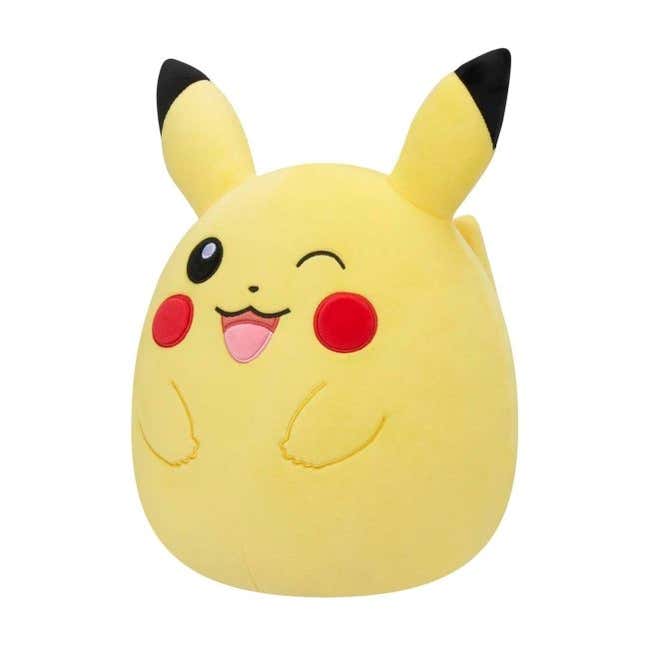
“I know with the Squishmallows for Pokémon, people can’t get those because as soon as they’re released at like Walmart and Target, there’s like a line of people in the morning trying to get these damn Squishmallows and they’re gone,” Klich said. “I went the day of release for the big Pikachu and it was gone before noon. Then immediately you see them on Facebook Marketplace and eBay for like triple and people are buying them.”
We’ve reached out to The Pokémon Company for this story, but did not hear back before publication.
If you’re seeing this mess and wondering if Pokémon merch is even worth pursuing, the sentiment between everyone we talked to for this story is that it can be a very disheartening endeavor, but there are pockets of community within Pokémon’s fandom that can make it better, and finding them, whether they’re on Discords, in Facebook groups, or on other platforms, can help alleviate some of the struggles. Pokémon fans are trying their best to make things better through open communication with other collectors, and finding your group can help you track down some pieces you might be looking for. Like most Pokémon adventures, the journey is best taken together.
“I understand why it is discouraging as a collector,” Klich said. “But don’t let this stuff discourage you from the community because the community is amazing in so many other ways. Don’t let a few poopy people ruin it for you.”





















